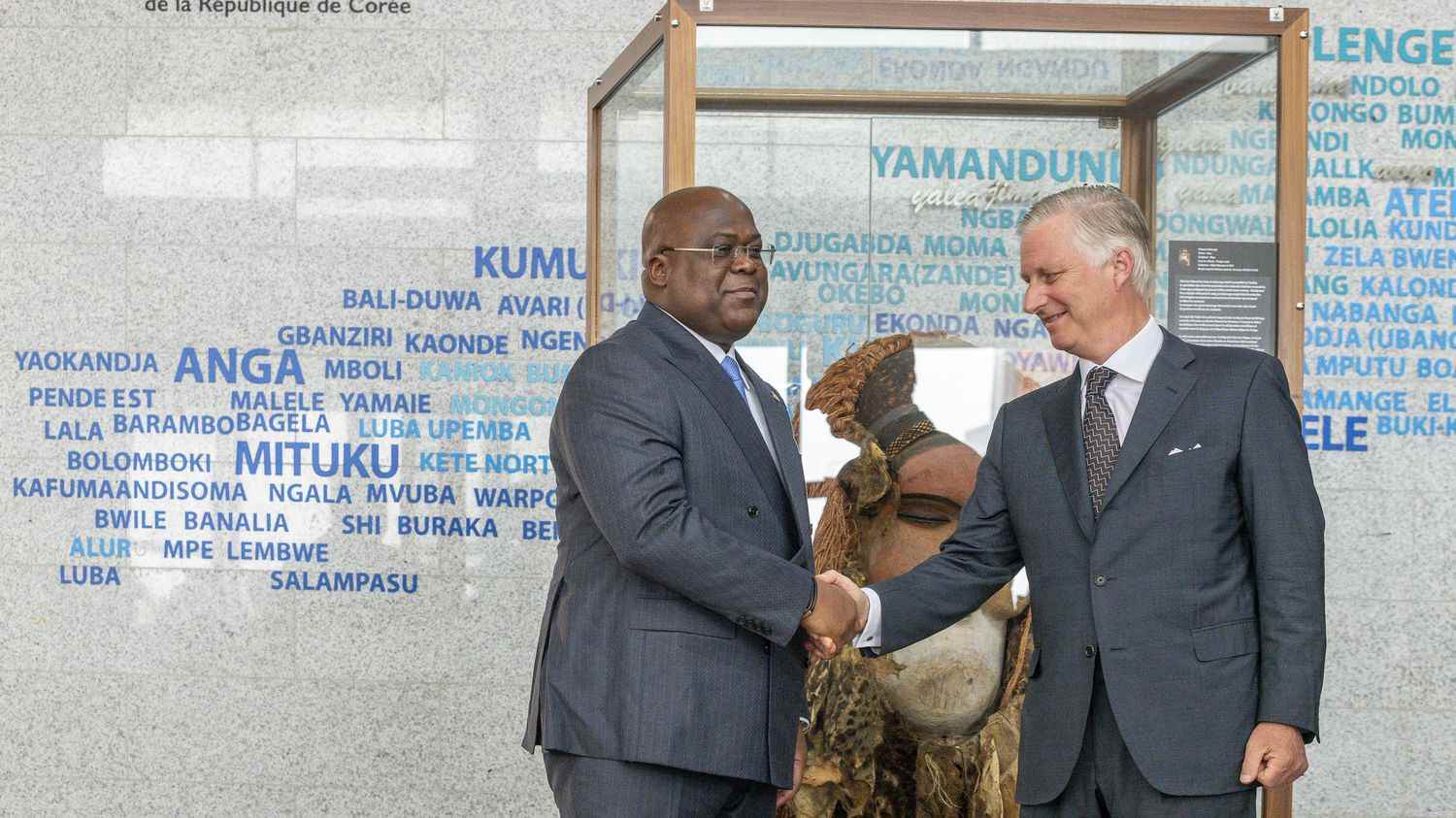It is a symbolic visit. King Philippe of Belgium has been in the Democratic Republic of Congo since Tuesday June 7 for a visit that will last a week. The objective of the sovereign is to turn the page of a heavy colonial past with the African country of 2.5 million square kilometers and nearly 90 million inhabitants.
The first symbol of this visit was Wednesday morning, with the return by the king of a giant mask 1.30 meters high and weighing 10 kilos. This sumptuous Kakuungu ceremonial mask was intended for the initiation rites of fertility and circumcision. It had been bought 70 years ago for 250 francs. The object is not officially returned, but it is just as it is now “loaned to the DRC for an unlimited period” by the famous Africa Museum in Tervuren, near Brussels. The handing over of the mask is intended to be the emblem of a new beginning between Belgium and its former colony, this immense Democratic Republic of the Congo, ex-Zaire.
The King of the Belgians is to deliver several speeches during this visit. The most anticipated is scheduled for Friday at the University of Lubumbashi, the big city in the south of the country. The whole question is whether the sovereign will officially apologize and ask forgiveness for Belgian colonization or simply repeat what he said two years ago, when he expressed “deep regrets for the wounds, the sufferings, the humiliations”. It was already an unprecedented admission but many Congolese expect more.
It must be said that the Belgian colonial past in the Congo is extremely heavy and goes well beyond the clichés conveyed by the famous “Tintin in the Congo”. Between 1885 and 1908, the King of the Belgians at the time, Leopold II, great-great-grandfather of the current sovereign, made the Congo his personal property, no more and no less. For twenty-three years, even before the Congo officially became a colony, brutality became the rule. The massacres were multiple, mutilations and disguised slavery were permanent. All in the name of an alleged civilizational work to better exploit ivory, gold or rubber.
Three years ago, a United Nations report highlighted the incredible cruelty of this period and insisted on Belgium’s duty to apologize. Then, the death in the United States of the African American George Floyd reactivated in Belgium the controversy over the responsibility of Leopold II. The splendor that accompanied the reception of King Philippe on Tuesday in Kinshasa is not to the taste of all Congolese. On social networks, many denounce this hint of colonialism.
The challenge is also the restitution of works looted at the time of colonization, like France with several other African countries including Benin. An official Belgian report unveiled last year estimates the number of these works likely to be returned to the Congo at 84,000. They are, for the most part, in the museum of Tervuren. A restitution bill should soon be examined by the Belgian parliament. It will pave the way for a technical bilateral agreement on the terms of restitution.
There is also the particular case of a very special relic: a tooth of Patrice Lumumba, hero of Congolese independence, assassinated in 1961 with the support of Belgian police officers who then kept this “trophy”. The tooth will be recovered at the end of June, in Belgium, by the current President of the Democratic Republic of Congo, Félix Tshisekedi.
